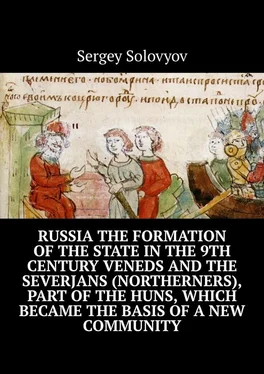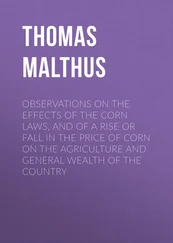The name of the Gandhari is found in the Rigvedea in the Atharvaveda. Gandhars are mentioned in the section of Uttarapathai’s puranas in Buddhist sources. Aytareya Brahmana speaks of the Gandhara king Naganajita, a contemporary of King Janaka of Videha. According to the Mahabharata, the Gandharians took the sides of the Kauravas against the Pandavas in the war and were at the same time brave and sophisticated warriors. In Gandhara, the influence of the culture of the south of Central Asia of the Bronze Age and the Gandhara cave culture, most likely corresponding to the migration of Indo-Aryans to the centers of the Vedic civilization, is traced. The Gandhara culture, or the Gandharian burial culture, or the Swat Valley Culture, or the Swat culture existed in the period 1600—500. BC. in the Gandhara district of Pakistan. Finds related to this culture have been found mainly in burials located along the banks of the Swat and Dir rivers in the north, Taxila in the southeast and Gomal in the south. The found pottery reveals a clear similarity with finds from the same period from Central Asia (Margian civilization) and the Iranian plateau. Archaeological cultures commonly associated with the migration of Indo-Iranian peoples (according to the Encyclopedia of Indo-European Cultures). Most often, the Andronovo, Margian and Yaz cultures are associated with these peoples. And here, in the myths of India, there is a name-Ganta, attributed to the Andronovites Huns (Hans), and is confirmed by gray (Minyan) ceramics.
Vedic literature is characterized by the use of ārya- as a common ethnonym for all Aryan tribes who professed the Vedic religion and opposed to anārya- “non-Aryan”, dasyu-, dasa “enemies-aborigines” (das), mleccha- “barbarian”. In the meaning of “noble”, he united three “twice-born” varnas (brahmanas, kshatriyas and vaisyas), opposed to the sudras as varna of non-Aryan origin. In the meaning of “people” they designated mainly the vaisyas (that is, “common people”) in contrast to the brahmanas and kshatriyas. That is, the actual Aryans, who came to India from China, lived south of the Ganta Gandhara. But numerically, the arty prevailed, but the gants managed to retain their distinctiveness. Ganty are Vaisnavas, and aryas are Saivists, and even their tilaka is different.
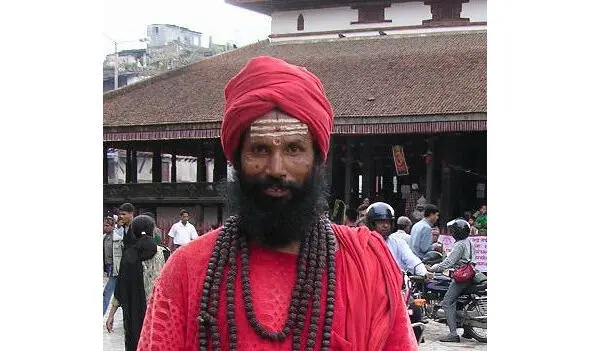
Tilak Shivaists
In the Rig Veda, the ethnonym is mentioned 36 times in 34 hymns. The Aryan world in the Rig Veda includes primarily Sapta Sindhavaḥ (Semirechye, Punjab rivers) and unites 5 large tribes: Anu, Druhyu, Yadu, Turvaśa and Pūru. In the era of the later Vedas, the center of the Indo-Aryans shifted to the east, to present-day Haryana, where the Bhārata tribe rises. The meaning of the word ārya- is increasingly associated with the Vedic religious cult, the concept of vratya- (“apostates”) appears – groups of people of Aryan origin who do not adhere to all the precepts of the Vedas. The tribal names will then be extremely important in the future. And here is the union of SEVEN tribes, no more and no less. Anu, Druhyu, Yadu, Turvaśa and Pūru. Also mentioned are the Bharat and Tritsu tribes. Perhaps this is all seven tribes. India’s official name is now BHARAT.
It is in India that one of the symbols that scientists do not want to see, Urdhva-Pundra, remained. In the Vaishnava tradition, tilaka is called urdhva-pundra. Tila – a small dot that is placed on the forehead – literally means “sesame, sesame.”
“An intelligent person who daily wears the twelve signs of tilaka on his body knows what is religion, dharma, and what is godlessness, adharma. He understands the difference between religious and non-religious principles. One who sees the difference between religious and non-religious principles is called a Vaisnava.”

Urdhva-Pundra on the body of a Vaishnavs
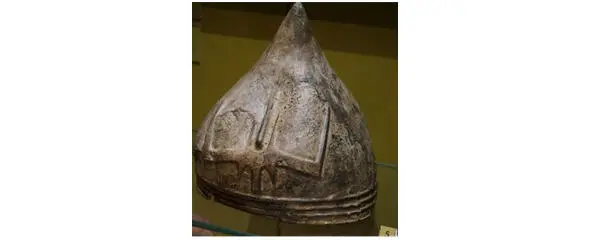
and on the helmets of Urartu
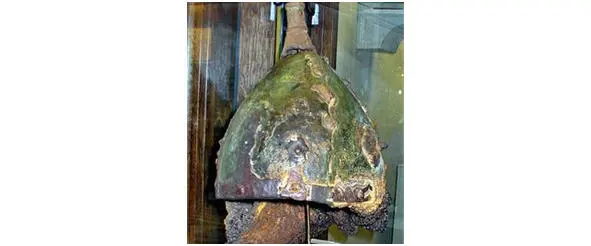
and on the helmets of Rus.
In the Brahmanda Purana it is said, “If a person is impure, lacks proper etiquette, or commits sins in his mind, he always remains pure if he wears tilaka.” The Supreme Lord further states: “Even if a person who adorns his body with tilaka is born in a dog-eating family or leaves his material body in a place other than a holy place, he will go on a heavenly ship to My transcendental abode, where he will enjoy eternal blissful life.” bhakti-vilasa, 4.202).
The tale of Ali Baba was very popular in Europe already in the 18th century. The earliest version of the tale “Ali Baba and the Forty Thieves” is found in the French translation of Galland, who was accused of falsification before the discovery of the original of the tale in Arabic at the beginning of the 20th century. After the death of the merchant, his eldest son Kasim inherits his business and, having married a wealthy woman, succeeds. The youngest son of Ali Baba marries a poor girl and becomes a beggar lumberjack. (A lumberjack in Baghdad is something already. Where is the forest there? This speaks of a borrowed plot, most likely of a more northern origin) Once, collecting brushwood in the forest, Ali Baba accidentally witnesses the conversation of forty robbers. The entrance to the cave, where the looted treasures are kept, is opened with the help of the magic words “Simsim, open” (in the classic translation of Mikhail Salie – “Sesame, open your door”). Having learned this secret, Ali Baba, after the bandits left, enters the cave and takes with him a bag of gold coins.
Mardjana is also mentioned in the tale, probably Margiana. That is, in the original, the action may be tied to Central Asia. Kasim enters the cave, but the robbers kill him.
So SESAME. Tilaka or tilak (tilaka IAST) is a sacred sign that the followers of Hinduism apply with clay, ash, sandalwood paste or other substance on the forehead and other parts of the body. The types of tilaka differ among followers of different directions of Hinduism and, among other things, serve as an identification mark, speaking of belonging to one or another religious tradition. Tilaka can be applied daily or only on special occasions.
“Urdhva” means “up” and “pundra” means “light”, therefore, applying tilak is a way to remind, first of all, to oneself, about one’s values and goals. In the Vaishnava tradition, tilaka is called urdhva-pundra. Tila – a small dot that is placed on the forehead – literally means “sesame, sesame.” here there is an association with the tale of Ali Baba and 40 robbers. The tale shows the philosophical overtones of the sesame, the password for entering the cave with riches is only possible for the bearer of Tilaki. There is Tilaka on your forehead – you will enter the Kingdom of Heaven, there is no Tilaka or you have forgotten about it, its true meaning – the passage to the Golden Kingdom is closed for you).
It must be remembered that “Aryans” is a self-name and scientific designation only for Indo-Iranian peoples. Arians (Avest. Airya-, Old-Ind. Ā́rya-, Old Persian ariya-) or Aryans (also Indo-Iranians) – the name of the peoples speaking the languages of the Aryan (Indo-Iranian) group of the Indo-European family, derived from the self-name of the historical peoples of the Ancient Iran and Ancient India (II – I millennium BC). The linguistic and cultural affinity of these peoples makes researchers assume the existence of an original Pra-Aryan community (ancient Aryans), the descendants of which are the historical and modern Iranian and Indo-Aryan peoples.
Читать дальше
